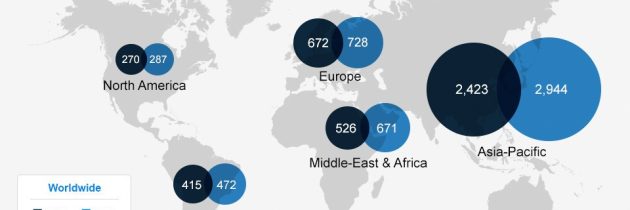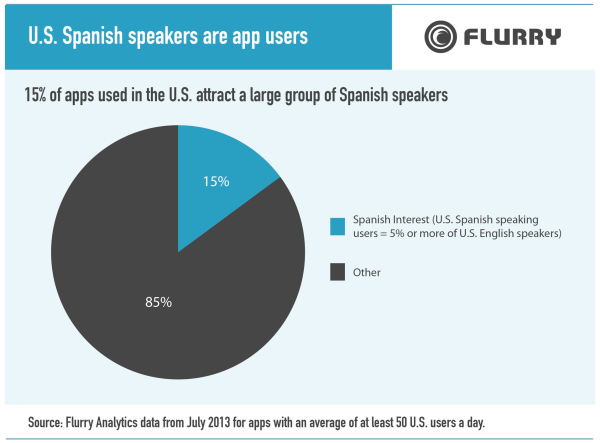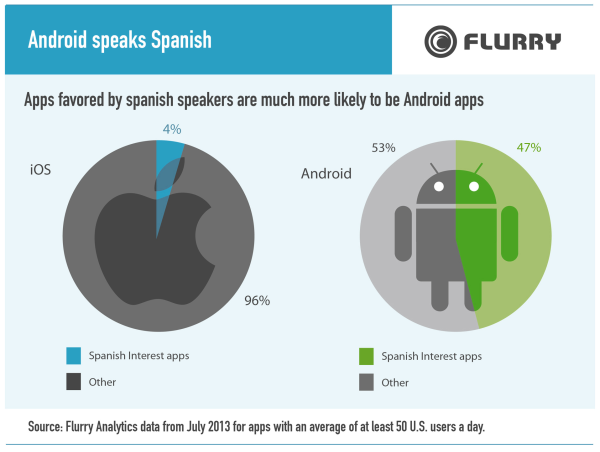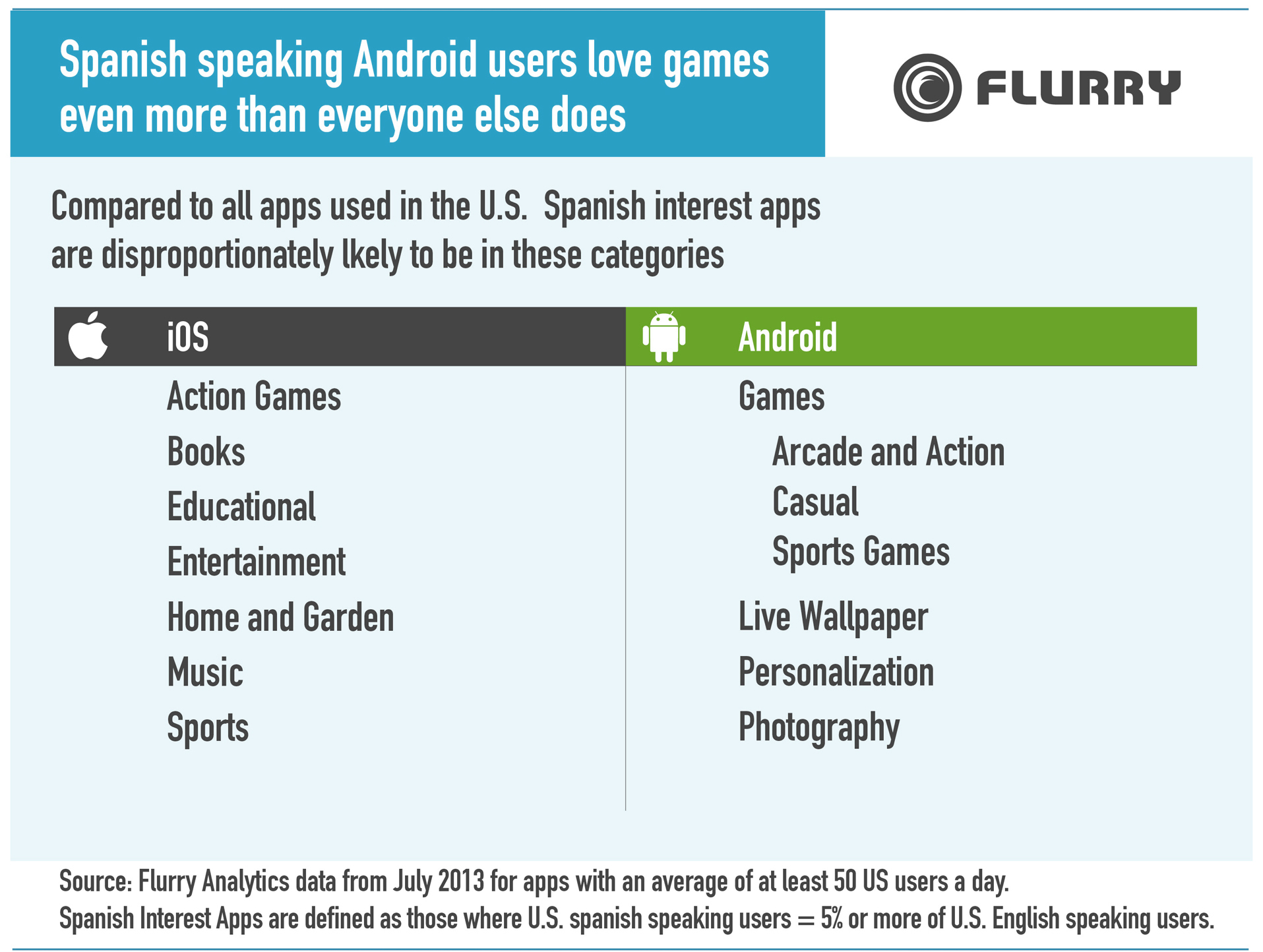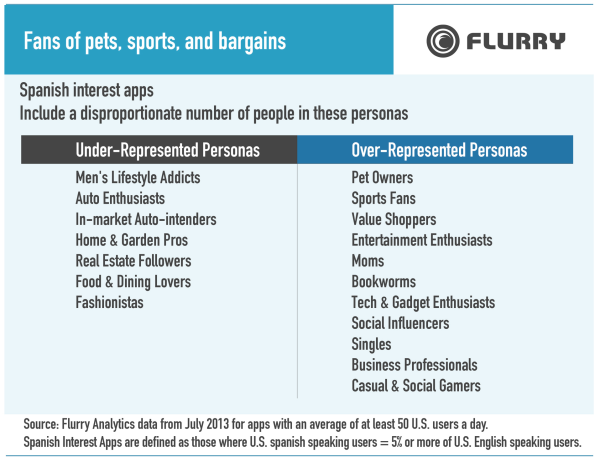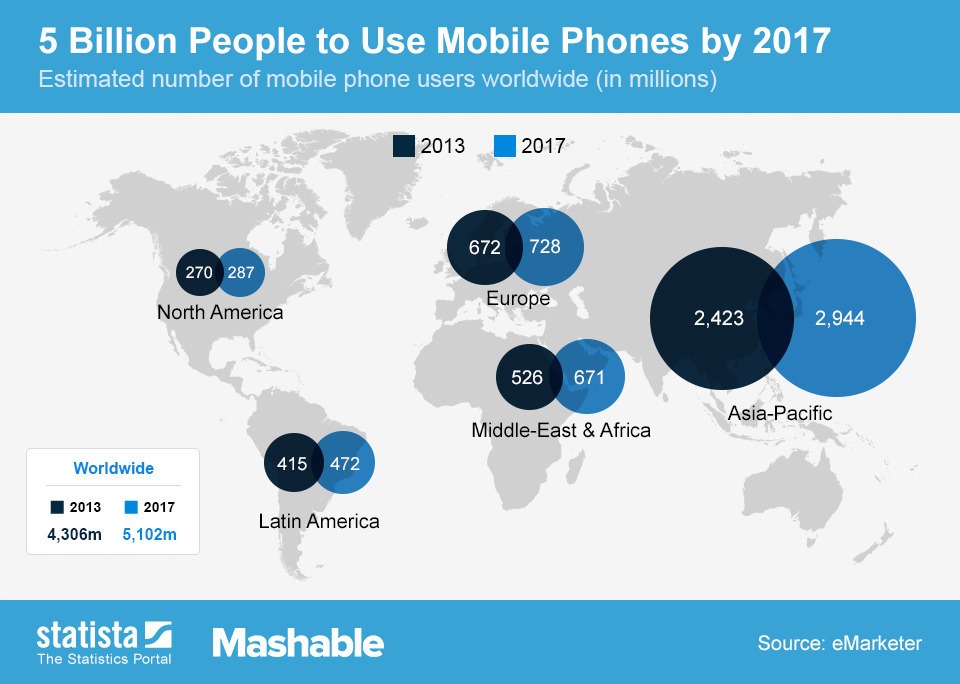Android Speaks Spanish, But Brands Don’t Speak Android
As Flurry observed earlier this week. There is a large percentage of users both iOS and Android (however more so on Android) that speak Spanish. The dilemma at hand is that most brands have still yet to embrace mobile at all, and if they have it's certainly not on Android.
This is mainly due to concerns with fragmentation or security in the open Android ecosystem (there have been several hacks, and the situation doesn't seem to be improving much at all). At the same time, this decision also has to do with the demographics of each operating system. A considerable amount of evidence suggests that, on average, iOS users are more affluent than Android users and they tend to spend more money in a variety of product categories.
Given the size of the Spanish speaking market, the shift of consumer attention toward mobile, and the advertising budgets that follow will need to change. Flurry's results show that if marketers want to reach Spanish speakers on mobile they are going to need to do so using Android.
More can be derived from the graphs below.
In other news..
Mobile marketing costs hit record high in August. Fiksu reported a Cost per Loyal User at $1.90 a 6% increase from July's $1.80. Evidently this is attributed to two main factors, #1 being - big brands saturating the market to cost-effectively acquire loyal users. Second, marketers are already looking ahead and starting to make headway with holiday planning. Many are applying their Q3 budgets to test different mobile marketing strategies before prices go sky-high in Q4 as they generally do.
eMarketer also recently reported that by 2017 there will be at least 5 Billion People Using Mobile phones.
This figure is 4.3 Billion more than those using them now. Unsurprisingly the Asian markets trump those in North and South America - combined. Currently home to 2.4 billion people that use mobile phones, this figure is projected to grow to 2.9 billion by 2017.

